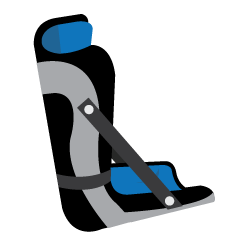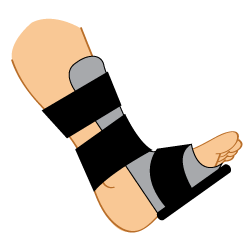
What Is A Night Splint?
The purpose of a night splint is to keep the plantar fascia in a stretched position to eliminate pain in the morning and during the day. It is a brace that not only attaches to the foot, it attaches to the ankle and lower leg, eliminating the chance for your body to heal properly during sleep. When you injure your plantar fascia it causes micro-tears along the ligament, causing it to elongate. When you sleep, your body works on repairing the damage by pulling the ligament back together. The pain that is felt during the first steps of the morning is the re-tearing of the ligament. Once the fascia is re-stretched out, the pain stops. If a night splint is used, the plantar fascia never has a chance to heal, eliminating the first steps of the morning being painful. This is why plantar fasciitis sufferers think this is helping, but in fact it is impeding the ability to heal.

Why Do Podiatrists Still Recommend It?
If you repeat your mantra over and over, eventually it starts being believed as fact. It has been said, with enough certainty that night splints will heal your problems, by enough people selling them, enough times that it has become one of the main recommendations for alleviating your plantar fasciitis. It won't. Night Splints are nothing but bad. But people, including podiatrists, make money selling them so they exist. Think logically! If you have an injury from over stretching your plantar, how is stretching it more going to make things better? Stretching is bad. Night splints are a scam.

More Harm Than Good!
When the plantar fascia is torn, the stretching that occurs is because of the injury. During the natural healing process your body is going to heal the ligament back to the length it is supposed to be. This is what happens when you rest. If night splints are worn, you force the body to heal in an unnatural position - with an elongated plantar. This will eventually, over time, create worse problems later, as the support is no longer there for the arch of the foot. Having flat feet from an elongated plantar can create a whole list of problems, from a change in gait (the way a person walks) to having severe back pain.
